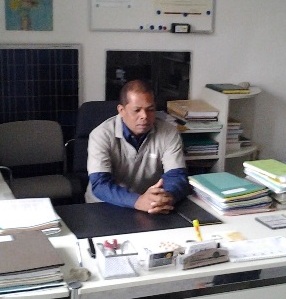Development of Macroeconomic Theory Materials Based on Blended Learning
Abstract
The aim of the study was to produce teaching material for Macroeconomics Theory. The Research and Development (R&D) method by Borg and Gall was used in this study. The population of this study was all Economic Education Study Program’s students who took Macroeconomics courses in 2019. The sample was determined by using the purposive random sampling principle and the sample class made for the implementation and limited testing of small sample was Class C of Economic Education. Based on the result of the study, it was decided that the teaching material for Macroeconomics Theory that has been validated by 2 expert validators had a very high level of eligibility (88.75%) provided revisions were needed. After it has been fully revised, the material was tested to all 30 students of Class C of Economic Education during Macroeconomics Theory course. Based on the testing conducted to the small sample, it showed that there was a significant improvement of the learning outcomes before and after the blended-learning based teaching material was implemented. The result was all the user-friendliness, usability, and time effectiveness factor have an average value ≥4. It can be concluded that the book being developed has met the readability and practicality criteria. The study was only conducted up to stage 7 -producing the teaching material of revision draft.
Keywords
Full Text:
PDFReferences
Adi, Sugeng Susilo. (2016). Classroom Management untuk Mahasiswa Jurusan Pendidikan. Malang: UB Press.
Borg, Walter.,& Gall, M.D. (1983). Educational Research : An Introduction (4ed). New York & London : Longman.
Arikunto, S & Safruddin A.J, C. (2009). Evaluasi Program Pendidikan. Jakarta: Bumi Aksara.
Dharmawati. (2017). Penggunaan Media E-Learning Berbasis Edmodo Dalam Pembelajaran English For Business. QUERY: Jurnal Sistem Informasi, Vol. 1(1), p 43-49.
Driscoll, M. (2002). Blended Learning: Let’s Get Beyond the Hype. LTI Magazine, (Online), (http://www.ltimagazine.com/ltimagazine /article/articleDetail.jsp), diakses 16 Maret 2019.
Ernawati, I dan Sukardiyono, T. (2017). Uji Kelayakan Media Pembelajaran Interaktif Pada Mata Pelajaran Administrasi Server. Jurnal Elinvo (Electronics, Informatics, and Vocational Education), Vol. 2 (2)
Graham, C.R., Allen, S., and Ure, D. (2003). Blended Learning Environments: A Review of The Research Literature, (Online), http://msed.byu.edu/ipt/graham/vita/ble_litrev.pdf), accessed March 2, 2018.
Hiltz, Roxanne, S., Turoff, & Murray. (2005). Education Goes Digital: The Evolution of Online Learning and the Revolution in Higher Education. Communications of the ACM. Vol 48(10): p 59-64.
Jones, N. (2006). E-College Wales, a Case Study of Blended Learning. Dalam C. J. Bonk & C.R. Graham (Eds.), Handbook of Blended Learning: Global Perspectives, Local Designs (hlm. 182-194). San Francisco, CA: Pfeiffer Publishing.
Kadir. (2015). Statistika Terapan : Konsep, Contoh, dan Analisa Data dengan Program SPSS/Lisrel dalam Peneltian. Jakarta : PT Rajagrafindo Persada
Osguthorpe, R., & Graham, R. (2003). Blended Learning Environments: Definitions and Directions. The Quarterly Review of Distance Education. Vol 4(3), p 227-234.
Sugiyono, (2010). Metode Penelitian Kuantitatif, Kualitatif dan R&D. Bandung : Alfabeta.
Zulkarnain. (2009). Teknik Penyusunan Bahan Ajar. [Online]. http//zulkarnain.net. [accessed December 5, 2018].
DOI: https://doi.org/10.33258/birle.v3i1.756
Article Metrics
Abstract view : 211 timesPDF - 186 times
Refbacks
- There are currently no refbacks.

This work is licensed under a Creative Commons Attribution-ShareAlike 4.0 International License.

This work is licensed under a Creative Commons Attribution-ShareAlike 4.0 International License

_.gif)




















_.gif)



